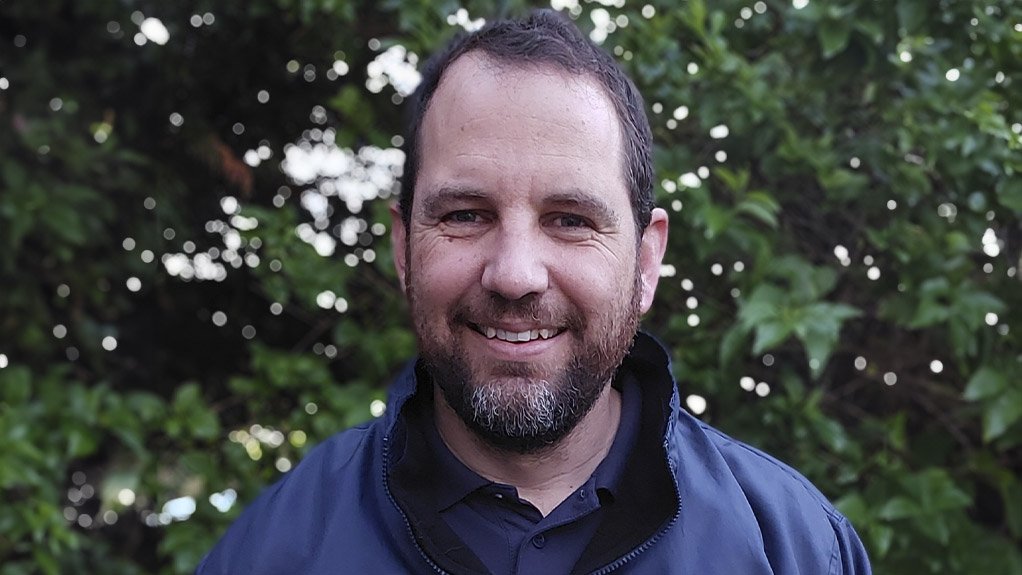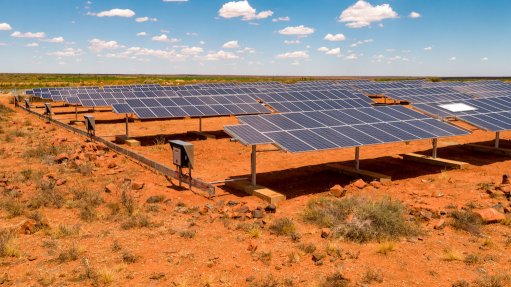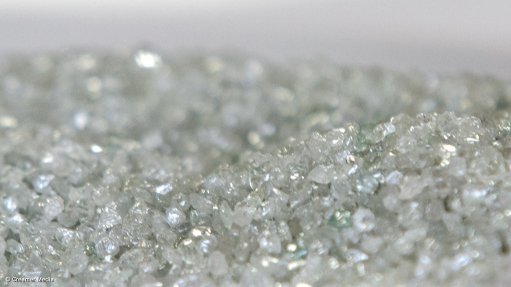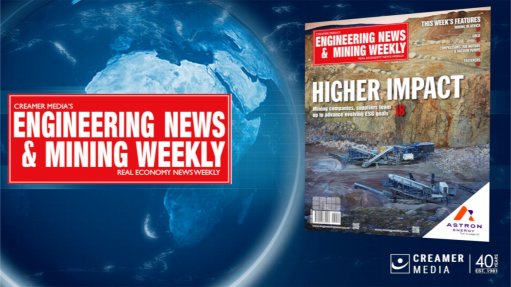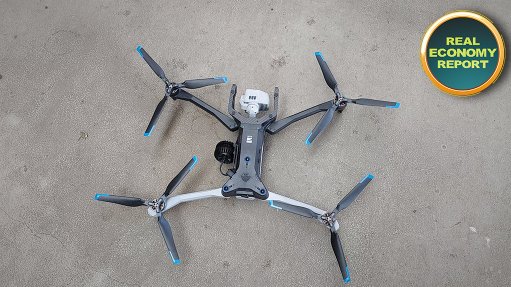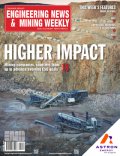AES: Energy assessments provide powerful insights which ‘fuel’ change
This article has been supplied as a media statement and is not written by Creamer Media. It may be available only for a limited time on this website.
When a production or manufacturing facility is built, everything is new and operating optimally. Over time, equipment deteriorates - or modifications are made with the best intentions, but not always with energy efficiency in mind. It is therefore good practice to do regular energy assessments to ensure for example that steam traps are working correctly, and there are no steam piping ‘dead legs’.
“Someone may move a machine, and the line which used to provide steam energy is not properly isolated - but is still receiving energy. This is what we term a ‘dead leg’ and is extremely inefficient,” explains Brenainn Cross, Technical Director at specialist operations and maintenance service provider to the steam and boiler sector, Associated Energy Services (AES).
Detail is in the data
AES engages clients regarding precisely what equipment is on site, and how their steam process operates, which entails requesting data from their systems. Where reliable data cannot however be provided – as sometimes is the case - AES employs data capturing equipment to fill in the gaps.
When it comes to doing an accurate energy assessment, Cross says understanding a company’s steam offtake is vital: “We want to know what their process looks like, how much energy they use, how they use it and when. Some companies have a very flat profile (such as a tissue manufacturer) where there is a very consistent offtake - while others have a batch-driven process (such as a tyre or a food manufacturer) with peaks and troughs throughout their steam offtake cycle.
“Many businesses do not realise that products use steam differently. They see steam use as a linear process, and do not appreciate that product type and mix has a big impact. There is great value for clients when they start understanding their own energy usage-related data – and AES’s energy optimisation capabilities, once we have the correct data,” he advises.
This information allows AES to estimate whether or not the client’s thermal energy plant is fit for purpose.
Finding the energy blind spots
Cross maintains that a lack of data – and analysis – around the conversion rate of fuel into energy is a substantial blind spot for many manufacturing or processing companies. Most focus on fuel consumption versus the quantity of product made – a process known as ‘fuel to product out’ costing - rather than monitoring how efficiently fuel is converted to steam energy and thereafter how much steam energy is used to produce the product.
He admits, however, there is no single ‘silver bullet’, and that energy assessments must be carried out on a case-by-case basis: “In instances where we see a mismatch between energy plant or equipment installed on site and the client’s energy usage profile, we will raise this. What we can achieve could be constrained by the incorrect or inadequate equipment. We have to assess whether capital investment is required for us to meet our energy optimisation commitments accordingly.”
To this point, AES’s advice may extend beyond the boiler itself, to issues such as water treatment and asset care: “One of our clients currently needs to consider additional feed water treatment to address a hard water challenge, and remove total dissolved solids that can affect overall boiler energy efficiency and - in the worst case - damage equipment,” Cross adds.
While data collected regarding pressures, flow rates and temperatures is invaluable, it is often difficult to access and complete a full and detailed risk assessment of all equipment while it is operational. For this reason, boilers need to be taken offline for inspection - so that AES can raise any problems with a client and discuss ongoing asset care and maintenance; as well as the impact thereof on the energy usage and optimisation process accordingly.
The power of change – and metrics
Cross describes an energy assessment as a “conversation continuing throughout AES’s relationship with the client”. Ongoing assessments are also vital due to staff and management changes: “We know the baseline situation when we take over the boiler operations and maintenance, however incoming staff and management may not. Therefore – from a perception perspective – it is very important that the client is consistently made aware of the implications were no energy assessments or optimisation to be done – and how pivotal these are to the long-term productivity and sustainability of their facility,” he says.
Energy savings speak for themselves. An example is the 21% and 38% improvement respectively registered at two food processing plants where AES is responsible for energy optimisation.
For Cross, initial assessments usually identify “low-hanging fruit” or early energy saving gains. Take insulation: AES has countless examples of advising clients to insulate heated surfaces as a quick way to recover wasted energy.
“Uninsulated steam lines result in energy losses through radiation heat transfer. For a steam line with the specific parameters stated, insulating this piping would amount to a reduction in CO2e of ~620 tonnes per annum,” he says.
Assessments ‘fuel’ change
“Over the past three years, we have seen increased pressure from larger clients requiring a more direct line of sight when it comes to their energy efficiencies - specifically with a view to environmental or carbon tax concerns,” Cross observes.
He adds that AES has been asked to assess many unusual prospective fuel types, including the use of process byproduct streams as potential fuels. “An assessment often proves that the potential energy generation does not warrant the capital expenditure required to make the fuel change,” he explains.
The game-changer is the baseline cost of the energy, notes Cross, citing a recent energy assessment where a fuel switch for a client has the potential to unlock significant operational savings.
“Throughout the process, input from specialist engineers allows us to fully assess – and convey to the client - the true value of fuel (or other) changes. In manufacturing or processing facilities, the focus is on the process but not on the conversion of energy – and often not sufficiently on its cost, quality or efficiency.
Regular, accurate energy assessments really focus clients’ attention on powerful insights which AES can then use, to make the changes required to achieve energy usage and cost-savings, as well as improved environmental and operational sustainability,” Cross concludes.
Comments
Press Office
Announcements
What's On
Subscribe to improve your user experience...
Option 1 (equivalent of R125 a month):
Receive a weekly copy of Creamer Media's Engineering News & Mining Weekly magazine
(print copy for those in South Africa and e-magazine for those outside of South Africa)
Receive daily email newsletters
Access to full search results
Access archive of magazine back copies
Access to Projects in Progress
Access to ONE Research Report of your choice in PDF format
Option 2 (equivalent of R375 a month):
All benefits from Option 1
PLUS
Access to Creamer Media's Research Channel Africa for ALL Research Reports, in PDF format, on various industrial and mining sectors
including Electricity; Water; Energy Transition; Hydrogen; Roads, Rail and Ports; Coal; Gold; Platinum; Battery Metals; etc.
Already a subscriber?
Forgotten your password?
Receive weekly copy of Creamer Media's Engineering News & Mining Weekly magazine (print copy for those in South Africa and e-magazine for those outside of South Africa)
➕
Recieve daily email newsletters
➕
Access to full search results
➕
Access archive of magazine back copies
➕
Access to Projects in Progress
➕
Access to ONE Research Report of your choice in PDF format
RESEARCH CHANNEL AFRICA
R4500 (equivalent of R375 a month)
SUBSCRIBEAll benefits from Option 1
➕
Access to Creamer Media's Research Channel Africa for ALL Research Reports on various industrial and mining sectors, in PDF format, including on:
Electricity
➕
Water
➕
Energy Transition
➕
Hydrogen
➕
Roads, Rail and Ports
➕
Coal
➕
Gold
➕
Platinum
➕
Battery Metals
➕
etc.
Receive all benefits from Option 1 or Option 2 delivered to numerous people at your company
➕
Multiple User names and Passwords for simultaneous log-ins
➕
Intranet integration access to all in your organisation



